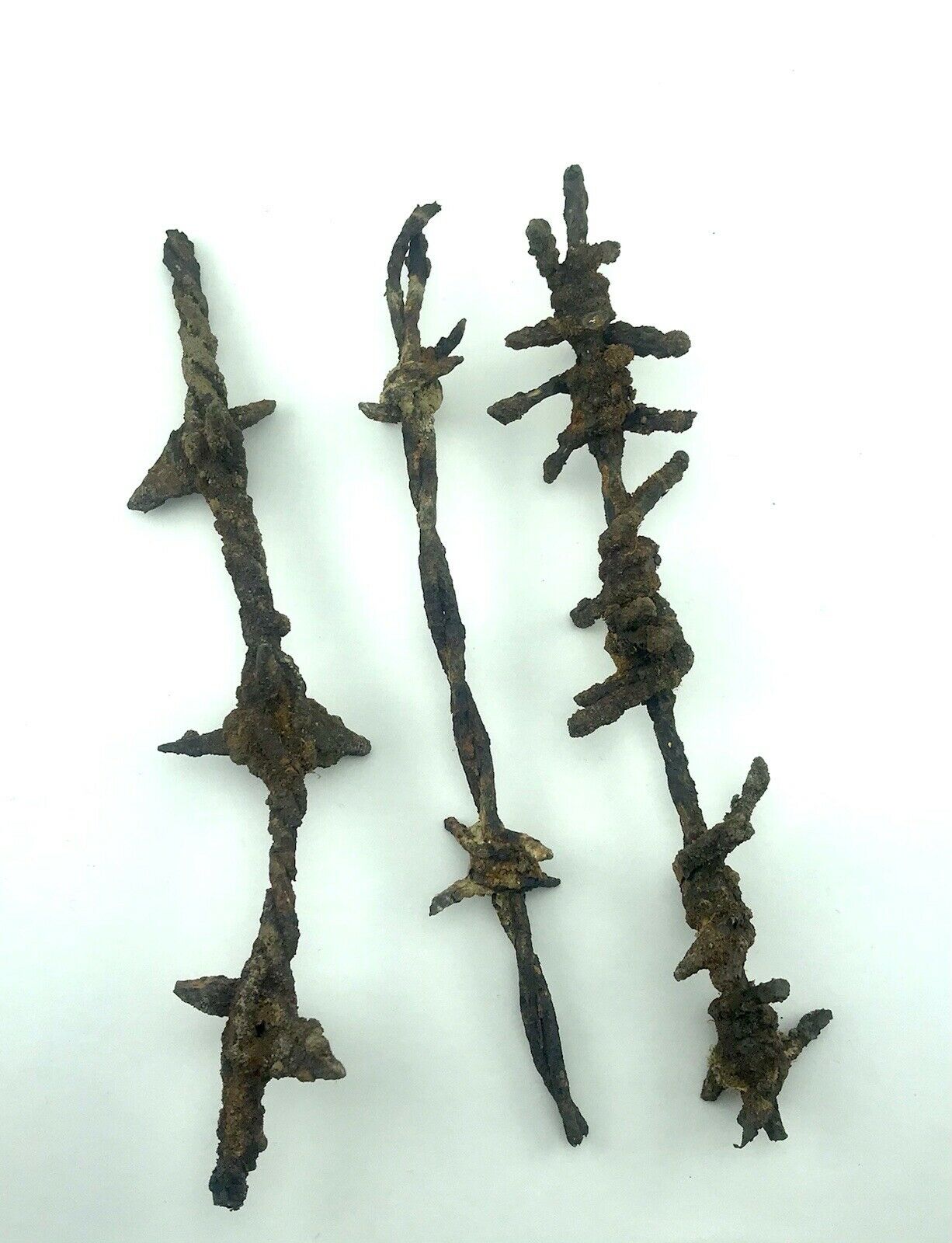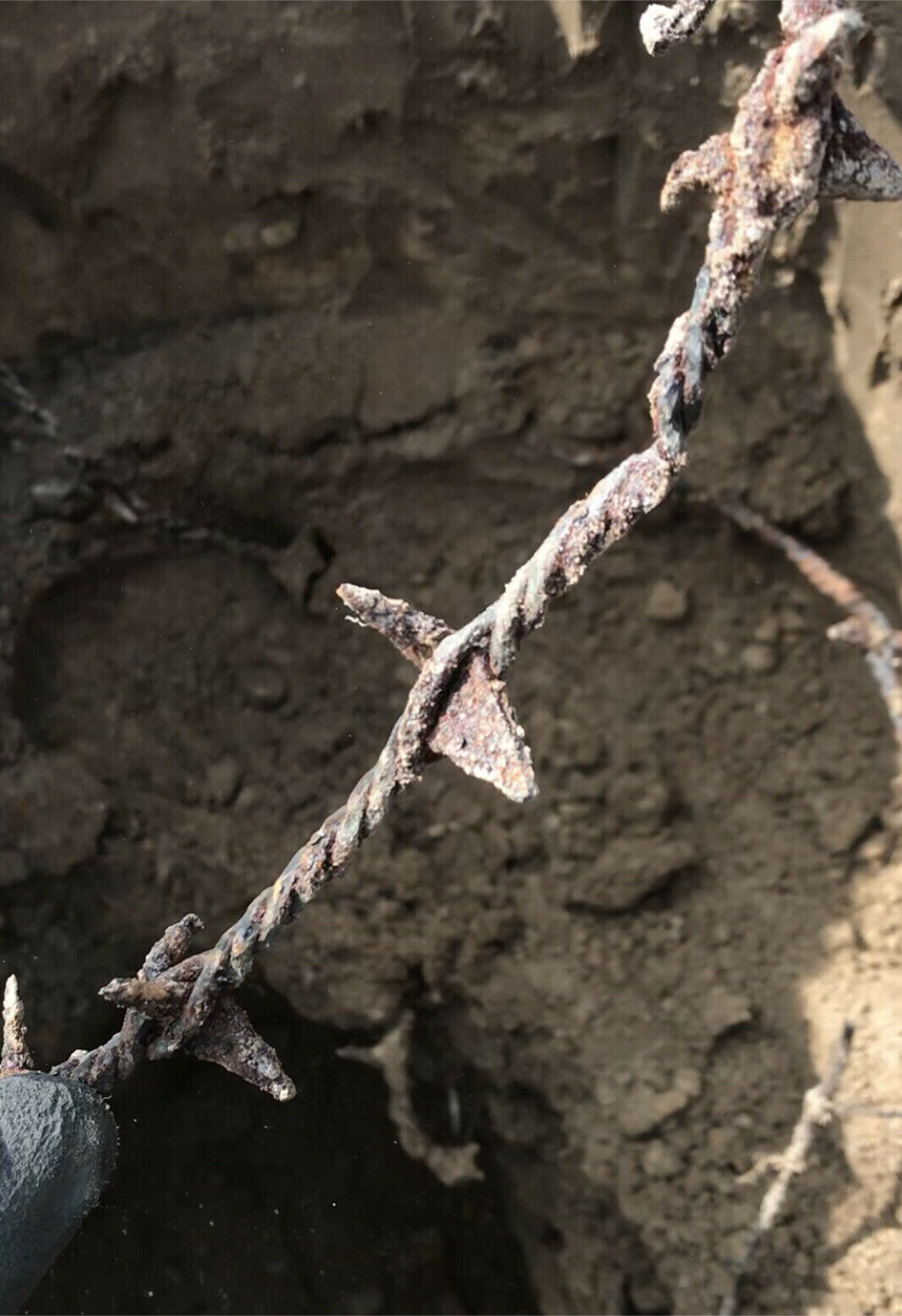-40%
WW1 Barbed Wire, WWI Antique Vintage Rare Relics Collectibles, Battlefield Dug
$ 8.44
- Description
- Size Guide
Description
A real barbed wire of the First World War from German trenches, positions and camps. I offer you a rare piece of wire. A relic of the battlefield in 1916 on the Eastern Front, also known as the "Brusyliv Offensive". Found using the XP DEUS metal detector.a list of three pieces of wire, two of which are common and the third very rarethe uniqueness that this thorn has a double value both historical and productionRelic of the Brusilov offensive battle, 1916(Eastern Front)
Finding trench positions
They were found in Ukraine using a metal detector.
I am looking for things with a metal detector that I sell the original.
I found with my own hands the places where historical events took place.
Watch Video
Video will open in a new window
Using the eBay App? Paste link into a browser window:
[isdntekvideo]
I would be grateful if someone would share with me a piece of my hobby and buy a thing with a hundred-year history as a collection or as a gift.
ADDITIONAL INTERESTING INFORMATION:
The
Brusilov Offensive
(Russian: Брусиловский прорыв
Brusilovskiĭ proryv
), also known as the June Advance,[4] was the Russian Empire's greatest feat of arms during World War I, and among the most lethal battles in world history. Prof. Graydon A. Tunstall of the University of South Florida called the Brusilov Offensive of 1916 the worst crisis of World War I for Austria-Hungary and the Triple Entente's greatest victory.[5] It was a major offensive against the armies of the Central Powers on the Eastern Front, launched on June 4, 1916, and lasting until late September. It took place in what today is Ukraine, in the general vicinity of the towns of Lviv, Kovel and Lutsk. The offensive was named after the Russian commander in charge of the Southwestern Front, Gen. Aleksei Brusilov.
SPECIFICATIONS:
* WW1 original dug (with using XP DEUS metal detector) relic , not cleaned condition!
* Real 1916 year battlefield relic from Eastern Front line also known as "Brusilov Offensive"
* 100% satisfaction, you'll receive real WW1 German collectables relic.
3 PIECES
LENGTH FROM 4 TO 9 INCHES
An amazing piece of barbed wire history. Since the introduction of barbed wire, barbed wire, arrowheads, needles and stickers, barbed wire "has become a source of wealth and fierce litigation, colored by passionate accusations and accusations of patent infringement and greed." For most of us, barbed wire is what we know. there is, but few city dwellers have used it, and I have certainly never thought about it, or about whether there can be different types, let alone that it was once a fiercely competitive business.
Developed during positional wars.
ADDITIONAL INTERESTING INFORMATION:
Appropriately enough, probably the first patent for a form of barbed wire was issued to Leonce Grassin-Baledans in 1860 in France, where the wire became a metaphor for the stalemate between the Germans and the Allies in World War I.
However, an Illinois farmer named Joseph F. Glidden is usually given credit for inventing barbed wire due to his 1874 patent for two twisted strands of wire that held a series of double, sharpened barbs in place.
Glidden meant his wire to keep cattle in or out, and after a few pokes from the sharpened barbs, most critters learned to respect the stuff.
Forged in war
It didn’t take long for military men to realize that enemy soldiers probably had even thinner skin than most animals and that barbed wire should be just as effective against infantry and cavalry troops as on cattle.
British Army manuals of the 1880s told how to string barbed wire around perimeters and the wicked stuff was used in the Spanish-American, Boer, and Russo-Japanese wars around the turn of the 20th century.
An article in a 1918 issue of The Hardware Trade Journal tells the story under the headline: “This Cruel War’s Abuse of Our Old Friend ‘Bob Wire.'”
After telling a little about Glidden and his invention, the article goes on as follows.
“Quite naturally some animals enclosed by Glidden’s fencing gashed themselves on the barbs. Just as naturally, men and boys tried to climb over or under those fences and had their clothes and flesh torn.
“These wounds upon man and beast and the suddenness with which Glidden’s barbs halted all living things came to the attention of military men, and the barbed wire entanglement of which we now read almost every day in the war news was born.
“And it may be said right here that soldiers who have been halted by wire entanglements while making a charge say the devil never invented anything nastier.”
Strategies
Soon, military engineers from armies all over the world were hard at work designing the most effective means of deploying barbed wire, most often as a defensive measure.
Broad (30 to 100 feet wide or more), zig-zagging belts of intertwined wire in front of a defensive position interfered mightily with an enemy assault; the attacking troops had to stop and take precious time to cut their way through the wicked stuff.
Of course, during this delay, those troops were perfect targets for rifle and artillery fire, and it was here that the machine gun really came into its own, providing covering fire for barbed wire barriers.
Often the wire would be laid out to funnel masses of charging troops into kill zones that were covered by pre-aimed artillery or machine gun fire.
One account of an attack on the first day of the battle of the Somme by a Newfoundland battalion tells the story:
“Those Newfoundlanders who did reach their own wire — four well-laid belts in all — had to follow zigzag lanes between pre-cut gaps, which had been exactly pinpointed by German machine-gunners.
“Those who managed to get through these gaps had to cross five hundred yards of open ground exposed to German positions. Those few Newfoundlanders who reached the German wire were shot down as they tried to cut their way through it with their wire-cutters.”
That first day at Somme cost the British Army 19,240 soldiers killed and over 36,000 wounded — mind boggling!
Terms of Sale:
Please check the picture carefully. You receive what you see, nothing more, nothing less. If there is a part that you don't see in the picture, that is because it's not included. We do our best to describe the item, but please note that you purchase the item AS it IS showed on a picture.
If You Have Any Questions- Please Ask !!!
!!! Welcome! Own Your Piece Of History !!!
Worldwide
Air Mail Shipping!

















